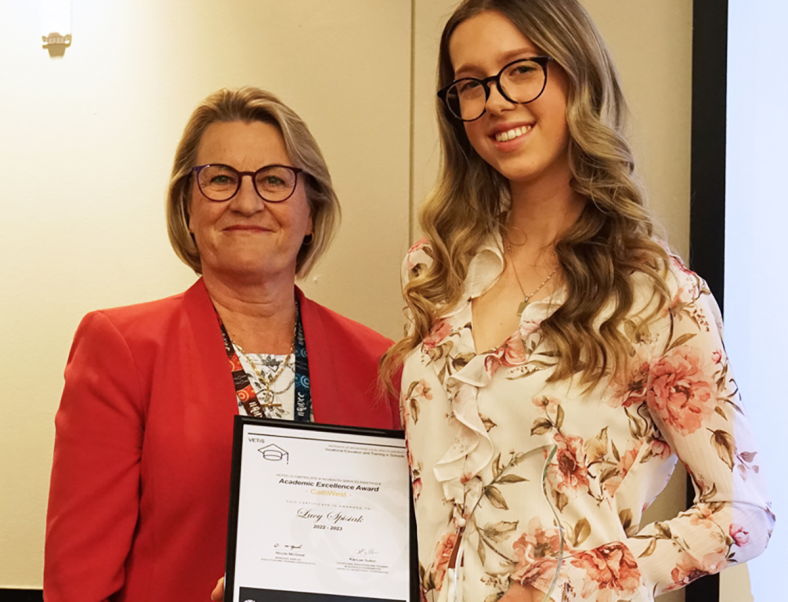Commitment to act and the courage to be vulnerable should form the foundation of any leadership model – not just inclusive leadership.
Organisations are more likely to meet or exceed financial targets if they’re inclusive. But what makes people feel included at work, and how can managers ensure they are treating all employees fairly and respectfully?
UNSW Business School’s Will Felps, Associate Professor in the School of Management, recently interviewed Juliet Bourke, Human Capital Partner at Deloitte, about what it takes to be an inclusive leader, as well as characteristics that should form the bedrock of effective leadership more generally.
Leaders often struggle to assess whether others see them as inclusive
Inclusive leadership is a relatively new concept. “There is no single organisation that can hand on heart say, ‘we have a 100 per cent inclusive culture’,” said Ms Bourke, “but there is a growing number who are really trying to get there”.
When asked why inclusive leadership has only been recently recognised as an important area of development, Ms Bourke said: “First, I don’t think we’ve taken the time to define and understand it before because we haven’t been working in an environment as diverse as it is now – diversity in the sense of working in multinational companies, in a very global way, even within our own [Australian] workforce.”
“Second, we didn’t have a model [of inclusive leadership]. And that was one of the reasons why I started researching inclusive leadership. And quite frankly I wanted to know whether I was an inclusive leader. Turns out that only 30 per cent of people can accurately assess whether others see them as inclusive,” she continued.
“So now we understand the [core] characteristics of inclusive leadership we can assess people and give them feedback,” she said.
The six characteristics of an inclusive leader
In her research, Ms Bourke identified the six signature traits of inclusive leadership:
Commitment
Courage to be humble
Cognisance of bias
Curiosity
Cultural intelligence
Collaboration
On the first point around commitment, Ms Bourke said when she spoke to highly inclusive leaders, they were all driven by their values. “So, their commitment to being inclusive stems from something within them, something about fairness or integrity or everyone having an opportunity,” explained Ms Bourke.
“Of course, they also believed in the business case and would articulate that to people. And they would make diversity and inclusion a priority through their investment of time, energy and resources. And finally, challenge the status quo and non-inclusive behaviours,” she said. These factors indicate a leader’s commitment to being inclusive.
On the second point, she said courage means being humble. “It is the courage to be a bit vulnerable, which we’ve seen more of during COVID-19,” she added.
Cognisance of bias, the third point, is acceptance of personal biases and recognising where you need to improve – “which is harder than it sounds, because there is a bias you may know called blind-spot bias, the bias to believe that everyone else has more biases than you,” she added.
Then follows curiosity: “Curiosity is about openness, tolerance of ambiguity and a perspective, taking and empathy,” she explained. While cultural intelligence is about whether a leader understands other cultures and can adapt, while collaboration is about empowerment, voice and team cohesion, explained Ms Bourke.
“This style of leadership focuses on interpersonal relationships, how people interact with human beings, and therefore it is fundamental to business performance,” said Ms Bourke.
What’s the most important characteristic of inclusive leadership?
For leaders, the essential characteristic of inclusive leadership (and leadership more broadly) is commitment. “If you don’t commit, then you’re never going to improve,” said Ms Bourke.
The most common factor that people in general struggle with, however, is that leaders don’t seek feedback on whether they come across as inclusive to someone else.
“They either assume they do, or they don’t know what to do with the answer if they did, or simply didn’t think to ask. So, they’re not getting the feedback, and yet everyone leader is judged by others on how inclusive they are,” added Ms Bourke.
On the other hand, for someone who is looking at or responding to a leader, the most crucial thing they look for is a consciousness of bias. They want to know if a leader is treating them fairly, whether they’re vulnerable, whether they have empathy and can appreciate different perspectives, concluded Ms Bourke.
Juliet Bourke leads Deloitte’s Australian Diversity and Inclusion practice, helping organisations assess, develop and implement cultural change strategies. She has contributed articles on inclusive leadership to the Harvard Business Review and Ted Talks, and sits on the HR Advisory Committee at UNSW Business School.
For the full podcast and story on 3 useful things to know about diversity and inclusive leadership visit UNSW BusinessThink.








